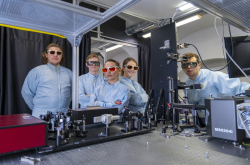Lung cancer is the most common cause of cancer-associated deaths worldwide, with the disease claiming 1.8 million lives every year. In the 1980s and 1990s, Russia had some of the world’s highest lung cancer death rates among men. Today, 50,000 lung cancer patients in Russia succumb to the disease annually: 40,000 men and 10,000 women. This accounts for 17% of deaths caused by oncological diseases for both men and women.
Smoking is the leading risk factor in developing lung cancer. That’s why, as a prevention measure, governments all over the world limit and prohibit smoking. While this is an effective measure, research also shows that computer tomography (CT) as a screening approach can decrease lung cancer mortality by over 20%. Some Russian regions, including Moscow and St. Petersburg, are already conducting pilot CT lung cancer screenings. However, the method also has its drawbacks: without proper quality control, the diagnostic procedure can do more harm than good; for instance, it can lead to overdiagnoses and a high number of false positive results.
Recently, a team from ITMO’s laboratory Digital Technologies in Public Health has identified tendencies in lung cancer incidence and death rate in Russia based on the data from the national cancer registry (which consists of data from regional population registries).
“Starting from 1993, we noticed a continuous decrease in incidence among men and a stabilization of incidence in women. Then, starting from 2010, incidence among men stopped its descent and among women – started to grow. At the same time, there wasn’t a corresponding trend in the death rate. These tendencies changed again during the pandemic,” says Rustam Tursun-zade, the paper’s first author and a researcher at the laboratory.
According to the researchers, there might be another factor apart from smoking that contributes to lung cancer incidence. In the past 20 years, the number of CT scans in Russia skyrocketed: in 2000, there were only 1,000 scans performed per 100,000 people; in 2021 – over 7,500 scans per 100,000 people. The sharpest growth occurred in 2010, when there was an increase in the number of computer tomography units in the country. It may be that the spread of this technology made it possible to diagnose more early cases of lung cancer.

Credit: wafi99d@gmail.com/ photogenica.ru
The researchers believe that this is the first study in the world that ties diagnostic resources to lung cancer incidence. There have only been similar papers on other types of cancer. The researchers also hope that their results will draw attention to the problem, acting as a push towards controlled implementation of CT for lung cancer screening and diagnostics.
“After all, the main purpose of screening is not to increase incidence, but to decrease the death rate. Our study doesn’t provide insight into the efficiency of CT as a screening tool. However, we are certain that proper quality control and organization of screening initiatives will require additional digital solutions. I hope that in the coming years we will be able to use the accumulated potential of high-profile medical equipment to launch a series of pilot lung cancer screening projects in the country. Thus, in several years we would be able to cut down the death rate of one of the most widespread oncological diseases,” concludes Yuri Komarov, the deputy head for organization at the N.N. Petrov National Medicine Research Center of Oncology and a researcher at the laboratory Digital Technologies in Public Health.
The researchers will continue analyzing the effect of new technologies and timely diagnostics on cancer epidemiology.





